
May was International Mediterranean Diet Month and the perfect time to explore the secrets of a diet-lifestyle that is connected to many health benefits including increased quality of life and lower risk of chronic diseases such as heart disease and diabetes. In our work and travels, we found many people were mixed up about what is the REAL Mediterranean-style diet. Fix the mix-up with our 6-point checklist.
Tasty Italian food such as pizza, pasta (which we love to enjoy from time to time as well) is not the real pattern of a healthy Mediterranean-style diet. The healthy Mediterranean diet is the traditional eating pattern of those who live along the shores of the Mediterranean Sea. It is a culturally diverse region with over 20 countries including Italy, Greece, Spain, France, and North African countries. This classic Mediterranean-style of eating was one of the three approaches for healthy eating recommended by the latest USDA Dietary Guidelines. Here is our 6-point checklist to recognize a Healthy Mediterranean-style diet that is based on nutrient dense, quality food.
- Plant based, using vegetables, fruit, whole grains, nuts, seeds, beans and legumes.
- Olive oil (which is high in monounsaturated fat) is a key ingredient
- Moderate fish / meat consumption
- Flavour boost from lemon, garlic, herbs, cheese, yogurt
- Wine with meals in low to moderate amounts
- Food and meals are enjoyed in the company of family, friends or community
Interested in learning more about the Mediterranean-style diet? Contact us for tips from our culinary travels and recipe collections. For starters try this “Memories of Italy” healthy snack: sliced pears topped with Parmigiano Reggiano cheese chunks and walnuts, drizzled with aged traditional balsamic vinegar (not the popular store variety).

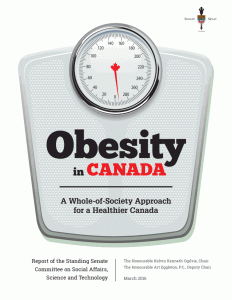
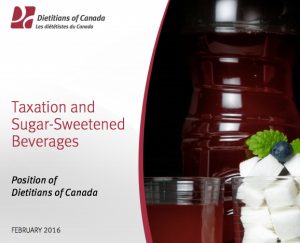




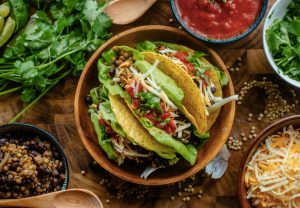
 ICYMI, Jamie Oliver was in Toronto to launch his new TV show on Food Network Canada and his new cookbook Everyday Super Food. We were there at the TV show prescreening and had a chance to listen to Jamie’s thoughts on his latest cookbook.
ICYMI, Jamie Oliver was in Toronto to launch his new TV show on Food Network Canada and his new cookbook Everyday Super Food. We were there at the TV show prescreening and had a chance to listen to Jamie’s thoughts on his latest cookbook.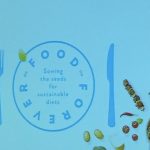
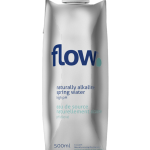 Alkaline water –naturally alkaline water with a high pH. A 500 mL serving contains: 0 calories, 0 g fat, 4 mg sodium 0 g carbohydrates, 0 g protein, 4% DV for calcium. (Top 10 Most Innovative Products for 2015.)
Alkaline water –naturally alkaline water with a high pH. A 500 mL serving contains: 0 calories, 0 g fat, 4 mg sodium 0 g carbohydrates, 0 g protein, 4% DV for calcium. (Top 10 Most Innovative Products for 2015.)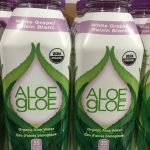 Aloe water – pulp free and sourced in North America. A 450 mL serving contains: 35 calories, o g fat, 0.015 mg sodium, 9 g carbohydrates, 8 g sugars, 0 g protein. (Made with aloe vera inner leaf powder, organic cane sugar, RebA stevia extract.)
Aloe water – pulp free and sourced in North America. A 450 mL serving contains: 35 calories, o g fat, 0.015 mg sodium, 9 g carbohydrates, 8 g sugars, 0 g protein. (Made with aloe vera inner leaf powder, organic cane sugar, RebA stevia extract.) Boxed water – why, because as the package says, “Boxed water is better”. The package tells their story – 78% of the box is composed from trees. No nutrition facts information is shown on the box.
Boxed water – why, because as the package says, “Boxed water is better”. The package tells their story – 78% of the box is composed from trees. No nutrition facts information is shown on the box. Protein2O – a protein enhanced water. A 500 mL serving contains: 70 calories, 0 g fat, 120 mg sodium, 70 mg potassium, 2 g carbohydrates, 0 g sugars, 15 g whey protein. (Made with sucralose.)
Protein2O – a protein enhanced water. A 500 mL serving contains: 70 calories, 0 g fat, 120 mg sodium, 70 mg potassium, 2 g carbohydrates, 0 g sugars, 15 g whey protein. (Made with sucralose.)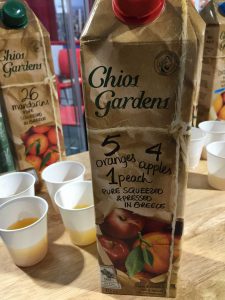
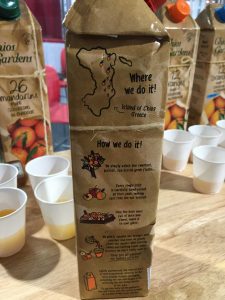
 3. Locally-grown quinoa. Who knew this gluten-free grain could be grown right here in in Ontario? Available in 2016.
3. Locally-grown quinoa. Who knew this gluten-free grain could be grown right here in in Ontario? Available in 2016.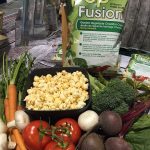 4. Pop Fusion Popcorn. Another local innovation. Popcorn is flavoured with a seasoning blend made from all of the veggies you see in the photo!
4. Pop Fusion Popcorn. Another local innovation. Popcorn is flavoured with a seasoning blend made from all of the veggies you see in the photo!

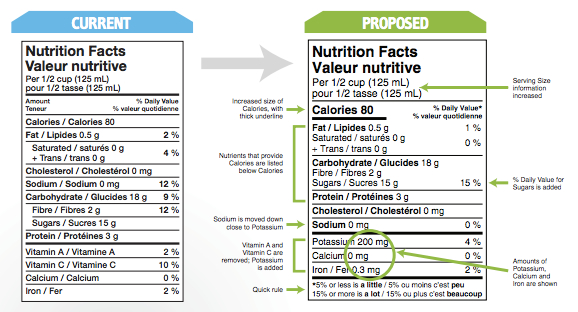
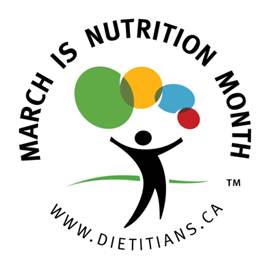 According to a poll by Ipsos Reid, 45% of Canadians say that eating healthy meals and snacks while at work is challenging. Are your 9 to 5 eating habits helping or hindering your productivity? Let us show you how healthy eating can boost your concentration, productivity and overall wellness.
According to a poll by Ipsos Reid, 45% of Canadians say that eating healthy meals and snacks while at work is challenging. Are your 9 to 5 eating habits helping or hindering your productivity? Let us show you how healthy eating can boost your concentration, productivity and overall wellness.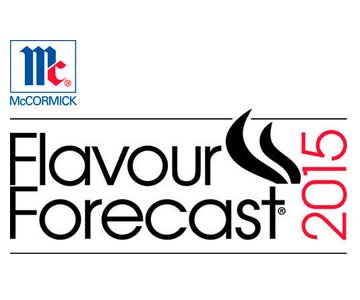

 Camelina Oil – Extracted from the Camelina sativa oilseed, camelina oil is about 90% unsaturated fat, with 39% omega-3 fat and 18% omega-6 fat. The oil boasts light, nutty and earthy notes. With a high smoke point of 475°F, camelina oil is versatile and can be used in salads, dips, dressings and marinades as well as cooking.
Camelina Oil – Extracted from the Camelina sativa oilseed, camelina oil is about 90% unsaturated fat, with 39% omega-3 fat and 18% omega-6 fat. The oil boasts light, nutty and earthy notes. With a high smoke point of 475°F, camelina oil is versatile and can be used in salads, dips, dressings and marinades as well as cooking.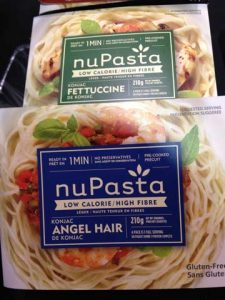 Nu Pasta – This gluten-free pasta is made from the konjac plant. It’s a type of tuber plant, which grows on slopes about 600 to 12,000 m above sea level. The root of the konjac plant is dried and milled into a fine flour which is the main ingredient of the pasta. A 210 g package contains: 25 calories, 1 g fat, 0 mg sodium, 6 g carbohydrates, o g sugar, 6 g fibre, and 1 g sugar. We sampled it in a stir-fry with garlic and pine nuts, which was a nice way to perk up the flavour.
Nu Pasta – This gluten-free pasta is made from the konjac plant. It’s a type of tuber plant, which grows on slopes about 600 to 12,000 m above sea level. The root of the konjac plant is dried and milled into a fine flour which is the main ingredient of the pasta. A 210 g package contains: 25 calories, 1 g fat, 0 mg sodium, 6 g carbohydrates, o g sugar, 6 g fibre, and 1 g sugar. We sampled it in a stir-fry with garlic and pine nuts, which was a nice way to perk up the flavour. Liquid Nitrogen Ice Cream – What do you get when you add milk, cream, sugar and -196°C liquid nitrogen? Ice cream, of course! It’s the coolest and coldest way to make ice cream, and it’s all ready in less than 60 seconds. Liquid nitrogen is simply the harmless nitrogen gas which has been cooled to such a low temperature that it becomes a liquid. We happily sampled the Pumpkin Spice Ice Cream – it was delicious!
Liquid Nitrogen Ice Cream – What do you get when you add milk, cream, sugar and -196°C liquid nitrogen? Ice cream, of course! It’s the coolest and coldest way to make ice cream, and it’s all ready in less than 60 seconds. Liquid nitrogen is simply the harmless nitrogen gas which has been cooled to such a low temperature that it becomes a liquid. We happily sampled the Pumpkin Spice Ice Cream – it was delicious!
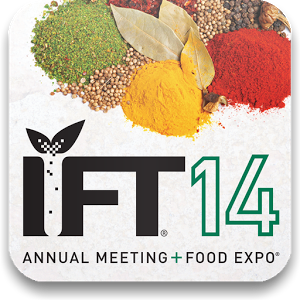 The Institute of Food Technologists (IFT) 2014 Annual Meeting attracted more than 16,400 food professionals from around the world to learn, exchange ideas and share knowledge. One of the highlights of the meeting was IFT’s five key innovation trends expected to have major impact on the food industry. We’ve added our builds for additional insights and context.
The Institute of Food Technologists (IFT) 2014 Annual Meeting attracted more than 16,400 food professionals from around the world to learn, exchange ideas and share knowledge. One of the highlights of the meeting was IFT’s five key innovation trends expected to have major impact on the food industry. We’ve added our builds for additional insights and context. US national menu labelling is expected to come into force this summer. The new regulations aim to ensure calorie labelling on menus and menu boards in chain restaurants, retail food establishments, and vending machines with 20 or more locations. We recently joined a US National Restaurant Association info session where we heard insights about what to expect next.
US national menu labelling is expected to come into force this summer. The new regulations aim to ensure calorie labelling on menus and menu boards in chain restaurants, retail food establishments, and vending machines with 20 or more locations. We recently joined a US National Restaurant Association info session where we heard insights about what to expect next. Canadians are snacking more than ever and their snacking habits will continue to rise in the foreseeable future. According to a recent report by US based Hartman group, 56% of people snacked three or more times a day. This is a significant increase from the 1990’s when only 20% cent of people said they snacked frequently.
Canadians are snacking more than ever and their snacking habits will continue to rise in the foreseeable future. According to a recent report by US based Hartman group, 56% of people snacked three or more times a day. This is a significant increase from the 1990’s when only 20% cent of people said they snacked frequently.
 Greenwood, a senior scientist at Baycrest Centre Foundation, has been studying the link between diet and dementia for years. As Greenwood describes it, the brain “has a wonderful capacity to refresh, to renew and to repair itself and to create new brain cells and new connections throughout a person’s life.” The goal of this book is to inspire healthy lifestyle and eating habits to promote successful aging and prevent the degeneration of one’s cognitive function.
Greenwood, a senior scientist at Baycrest Centre Foundation, has been studying the link between diet and dementia for years. As Greenwood describes it, the brain “has a wonderful capacity to refresh, to renew and to repair itself and to create new brain cells and new connections throughout a person’s life.” The goal of this book is to inspire healthy lifestyle and eating habits to promote successful aging and prevent the degeneration of one’s cognitive function. From protein and probiotics to tea and cooking, we’ve got the scoop on the top 10 hottest trends for 2014.
From protein and probiotics to tea and cooking, we’ve got the scoop on the top 10 hottest trends for 2014. My Healthy Plate with Metro program has recently been announced in Ontario and Quebec. With a goal to help customers adopt healthier eating habits, the program highlights healthy choices using “smile” icons. The smiles are found on the product’s shelf price label, and identify the “good” and “great” choices in a product category.
My Healthy Plate with Metro program has recently been announced in Ontario and Quebec. With a goal to help customers adopt healthier eating habits, the program highlights healthy choices using “smile” icons. The smiles are found on the product’s shelf price label, and identify the “good” and “great” choices in a product category. On October 17, Hypertension Canada, the nation’s experts on blood pressure, raised the recommendations for sodium intake from 1500 milligram per day to no more than 2,000 milligrams (mg) per day.
On October 17, Hypertension Canada, the nation’s experts on blood pressure, raised the recommendations for sodium intake from 1500 milligram per day to no more than 2,000 milligrams (mg) per day.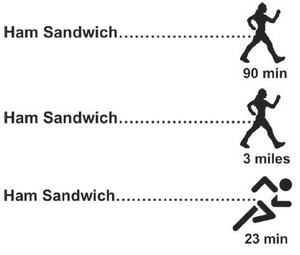 The conversations about menu labelling continue. Dr. David McKeown, Toronto’s Chief Medical Officer of Health supports mandatory menu labelling of calories and sodium, while some researchers wonder whether “physical activity equivalent” labelling is a more effective strategy.
The conversations about menu labelling continue. Dr. David McKeown, Toronto’s Chief Medical Officer of Health supports mandatory menu labelling of calories and sodium, while some researchers wonder whether “physical activity equivalent” labelling is a more effective strategy.
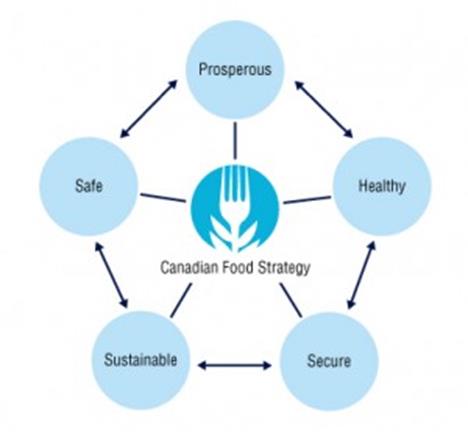 At the second annual Canadian Food Summit, held in Toronto on April 9-10, Dr. Michael Bloom, Vice-President at The Conference Board of Canada, shared a draft Canadian Food Strategy to stimulate change in our nation’s food system. The strategy is being developed as a comprehensive, evidence-based and action-oriented framework.
At the second annual Canadian Food Summit, held in Toronto on April 9-10, Dr. Michael Bloom, Vice-President at The Conference Board of Canada, shared a draft Canadian Food Strategy to stimulate change in our nation’s food system. The strategy is being developed as a comprehensive, evidence-based and action-oriented framework.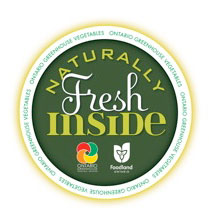 Ontario greenhouse growers have already created a new logo to help consumers find local foods and beverages. A new Naturally Fresh Inside campaign from the Ontario Greenhouse Vegetable Growers (OGVG) is an ambitious program to encourage consumers to buy local produce such as English cucumbers, bell peppers and tomatoes. Look for in-store sampling, point-of-sale educational material, flyers, radio spots, social media advertising and a partnership with Foodland Ontario. For more information, visit:
Ontario greenhouse growers have already created a new logo to help consumers find local foods and beverages. A new Naturally Fresh Inside campaign from the Ontario Greenhouse Vegetable Growers (OGVG) is an ambitious program to encourage consumers to buy local produce such as English cucumbers, bell peppers and tomatoes. Look for in-store sampling, point-of-sale educational material, flyers, radio spots, social media advertising and a partnership with Foodland Ontario. For more information, visit: 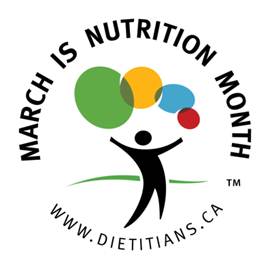 Grocery shopping for healthier choices is a challenge for many Canadians. A survey by Dietitians of Canada found that 63% of Canadians struggle with making healthier food choices in the grocery store at least half of the time they shop. Nutrition Month 2013 is here to help.
Grocery shopping for healthier choices is a challenge for many Canadians. A survey by Dietitians of Canada found that 63% of Canadians struggle with making healthier food choices in the grocery store at least half of the time they shop. Nutrition Month 2013 is here to help. The year 2013 has been declared “The International Year of the Quinoa” (IYQ), recognizing the Andean indigenous peoples who have preserved and protected quinoa for thousands of years as a food for present and future generations.
The year 2013 has been declared “The International Year of the Quinoa” (IYQ), recognizing the Andean indigenous peoples who have preserved and protected quinoa for thousands of years as a food for present and future generations.